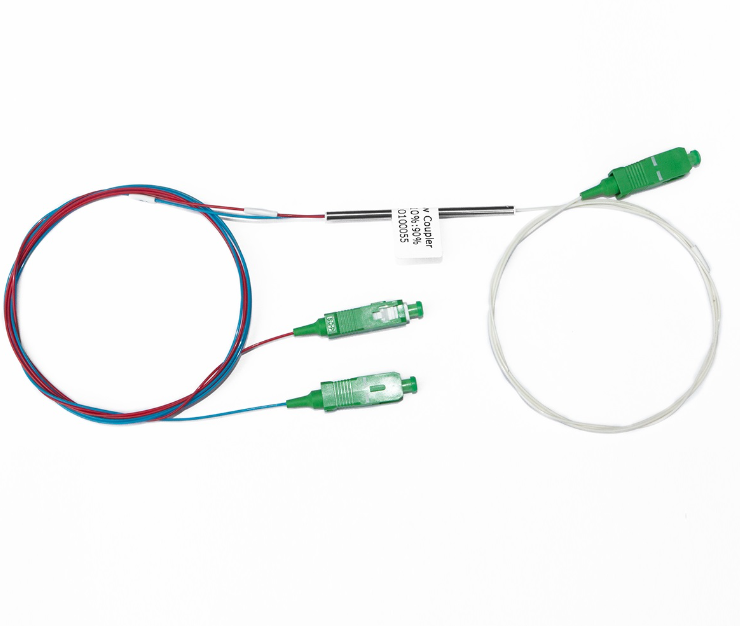Maximizing FTTH and EPON Networks with FBT Splitter Benefits

FBT Splitter
Efficient Optical Signal Division
Fused Biconical Taper (FBT) splitters play a crucial role in maximizing Fiber to the Home (FTTH) and Ethernet Passive Optical Network (EPON) networks. These optical splitters efficiently divide optical signals, enabling seamless distribution across fiber networks. The benefits of FBT splitters in ensuring efficient optical signal division are paramount for optimizing network performance. Additionally, comparing FBT splitters with PLC splitters provides valuable insights into the advantages of utilizing FBT technology for network optimization.
Benefits in Networks
Efficient Optical Signal Division
When it comes to maximizing FTTH and EPON networks, the efficient division of optical signals is essential for seamless data transmission. FBT splitters excel in this role, ensuring that optical signals are accurately divided and distributed across the fiber optic network. By utilizing FBT splitters, FTTH networks can achieve optimal performance, delivering high-speed internet and reliable connectivity to end-users. The benefits of FBT splitters in enabling efficient optical signal division contribute significantly to the overall reliability and effectiveness of fiber optic networks.
Comparative Analysis with PLC Splitters
In comparison to PLC splitters, FBT splitters offer distinct advantages in network optimization. The unique design of FBT splitters allows for a more cost-effective solution without compromising on performance. Additionally, FBT splitters provide greater flexibility in terms of splitting ratios, making them suitable for various network configurations. The utilization of FBT splitters presents key benefits such as enhanced signal integrity and reduced insertion loss, ultimately leading to improved network efficiency and reliability.
FBT vs. PLC
Understanding FBT Splitters
FBT splitters, short for Fused Biconical Taper splitters, are integral components in network optimization, particularly in FTTH and EPON networks. These optical splitters effectively divide optical signals, ensuring seamless transmission across fiber optic networks. Unlike PLC (Planar Lightwave Circuit) splitters, FBT splitters utilize a unique manufacturing process that involves fusing and tapering optical fibers together. This process results in a durable and reliable splitter that is well-suited for broadband technologies such as EPON.
Key points:
FBT splitters are essential for efficient signal division in FTTH and EPON networks.
Their unique manufacturing process ensures durability and reliability.
They are well-suited for broadband technologies like EPON.
Advantages of FBT Splitters
The efficiency and reliability of FBT splitters make them highly advantageous in network optimization. Their robust construction enables them to withstand the demands of fiber optic network technology, providing consistent performance over time. Additionally, the seamless signal division and distribution capabilities of FBT splitters contribute to the overall effectiveness of FTTH and EPON networks, making them a preferred choice for broadband deployment.
Key advantages:
Robust construction for long-term reliability.
Seamless signal division enhances network effectiveness.
Preferred choice for broadband deployment.
FBT Operations
Manufacturing and Installation
When it comes to the manufacturing of optical splitters, the process involves precision and expertise to ensure the highest quality and performance. FBT splitters are crafted through a meticulous fusion and tapering of optical fibers, resulting in durable components that effectively divide optical signals in fiber optic networks. The installation of these fiber optic splitters requires careful consideration of factors such as signal loss, environmental conditions, and network architecture. Best practices for installation include strategic placement to minimize signal degradation, proper protection from external elements, and adherence to industry standards for optimal performance.
List:
Precision fusion and tapering process for manufacturing FBT splitters
Consideration of signal loss, environmental factors, and network architecture during installation
Strategic placement, protection, and adherence to industry standards for optimal performance
Maintenance Guidelines
Maintaining the longevity and efficiency of lightwave splitters is essential for sustaining network performance. Regular inspection for any signs of wear or damage is crucial, along with periodic cleaning to ensure unobstructed signal transmission. Additionally, monitoring signal integrity and addressing any potential issues promptly can prevent disruptions in network operations. Adhering to manufacturer guidelines for maintenance schedules and procedures is fundamental in maximizing the performance of optical signal splitters within fiber networks.
Network Optimization
Maximizing FTTH and EPON Networks
As the demand for high-speed internet and reliable connectivity continues to grow, optimizing Fiber to the Home (FTTH) and Ethernet Passive Optical Network (EPON) networks becomes increasingly crucial. Leveraging Fused Biconical Taper (FBT) splitters is instrumental in maximizing the performance of these networks. By strategically integrating FBT splitters into the optical distribution network, operators can effectively manage signal division and distribution, ensuring seamless data transmission to end-users. Implementing FBT splitters in FTTH and EPON networks enhances network performance, minimizes signal loss, and promotes efficient utilization of fiber optic access networks. Moreover, the scalability of FBT splitter technology allows for future expansion and upgrades, catering to the evolving needs of modern broadband deployment.
Future of FBT Splitters
The future of FBT splitters holds promising advancements that are set to revolutionize passive optical network technology. Anticipated innovations in FBT splitter technology include enhanced splitting ratios, improved signal integrity, and compatibility with next-generation fiber optic access networks. These advancements are poised to have a significant impact on the evolution of fiber optic networks, paving the way for higher bandwidth capacity, extended reach, and seamless integration with emerging technologies such as 5G connectivity. The continuous development of FBT splitters underscores their enduring relevance in network optimization and their pivotal role in shaping the future landscape of passive optical network infrastructure.
Future of FBT Splitters
As technology continues to advance, the continued relevance and significance of FBT splitters in network optimization remain paramount. Anticipated advancements in FBT splitter technology are expected to revolutionize FTTH and EPON networks, offering enhanced splitting ratios and improved signal integrity. The applications of FBT splitters in fiber optic technology are set to expand, catering to the evolving demands of high-speed data transmission and seamless connectivity. The future landscape of passive optical network infrastructure will be shaped by the enduring capabilities of FBT splitters, ensuring efficient utilization of fiber optic cables and promoting extended reach for broadband deployment.
See Also
Maximizing Performance and Affordable Fiber Optic Connections
Uncovering FTTR Concealed Fiber Cable: A Revolutionary Answer
Enhancing Network Efficiency with FiberHome Fiber Optics


